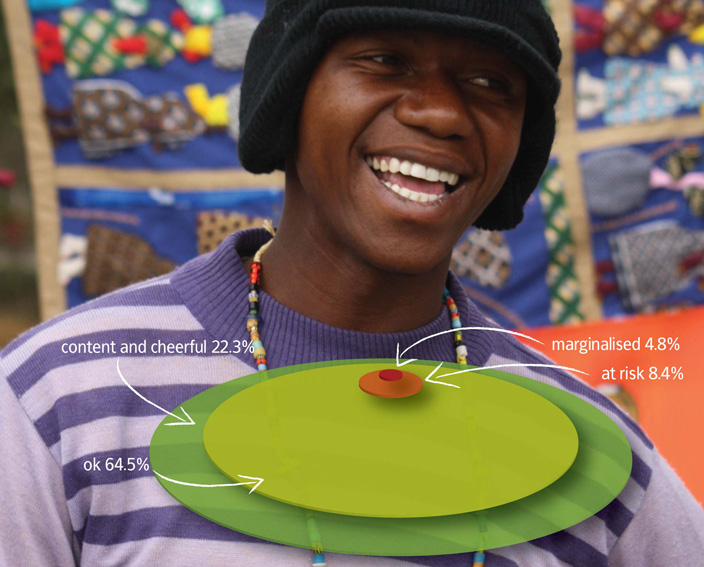
| introduction |
| profiling the marginalised |
| key policy goals |
| positive results | ||
Even after analysing quality of life and finding positive scores, we were surprised to find that singling out psycho-social attitudinal variables, scores were still largely positive: |
||
As the scores make clear, the vast majority of respondents (86.8%) were either absolutely fine or ‘OK’. The ‘content and cheerful’ were quite remarkable – 22.3% of the sample scored from 0 to 0.9999 on the index. The scores reinforce the point made earlier: city-regions, the GCR included, are places where people can realise their dreams and live fulfilling lives. Those we have labelled ‘OK’ – who comprise 64.5% of the sample – were themselves a very positive group, scoring between 1 and 3.9999 on the scale. If we remember that 1 is the best and 10 the worst end of the scale, and these respondents are scoring up to 4, it reinforces the point that the majority of citizens - 87% - are doing fine. The category called ‘at risk’ includes 8.4% of respondents. They have been labelled ‘at risk’ precisely because they are scoring reasonably high – between 4.0 and 4.999 – and as such may move towards the ‘OK’ or towards the ‘marginalised’ categories, and should be a key target group for government interventions. |
||
 |
||
| In the core of the graphic we find 4.8% of the sample who have been labelled ‘marginalised’ because they are scoring high on five and more items in the index. These are people on the margins, with extreme socio-political views, high levels of alienation and anomie, often victims of crime and suffering high poverty, and disconnected from society either through media or not participating in civil society organisations. | ||
